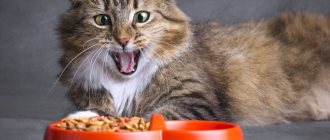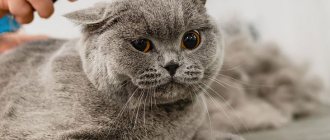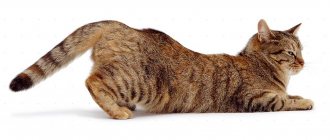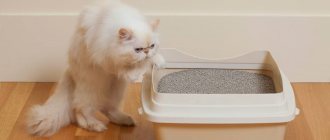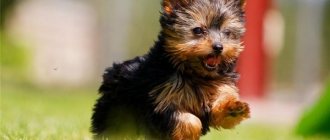Birds bring positive variety to the everyday boring life of a person. Parrots occupy a special place among feathered pets. This is explained by the sociability, curiosity, extreme activity and fun of this species of bird. Pet stores and breeders offer a wide range of parrots, but it is advisable to take into account that not all of them are domestic species and are suitable for living with humans. To ensure that the pet is a joy for all family members and feels comfortable, it is appropriate to consider the selection criteria and review the best breeds of parrots for 2022 that can be kept at home.
Budgerigar
Budgerigar.
Photo: pixabay.com How they differ: Active, love attention. You can teach not only to speak, but also to sit on your shoulder or fingers. They make less noise than other brothers. Can be kept in a cage in pairs.
Speech Ability: Can remember up to 150 words. The speech is not very clear and loud, but the owners will understand the chirping of their pets.
Size: Up to 18 cm
Weight: 30 - 40 g
Lifespan: From 5 to 15 years
Criterias of choice
When choosing a new family member, we advise you to follow the following rules:
- young birds (28-35 days) adapt more easily to new conditions, it is easier for them to get along in a new place;
- talkative individuals - males who have no rivals; in order for an individual to speak, you need to communicate with it regularly;
- a sick parrot sits on a perch, does not chirp, does not make contact;
- In a healthy individual, the pupils should not be cloudy, there should be no stains, mucus or other secretions on the beak, the claws should be clean, without signs of growths or peeling.
Corella
Corella.
Photo: pixabay.com How they differ: They quickly get used to the cage. You can start one if you have small children at home. The cockatiel may be of medium size, but if it bites, it doesn’t hurt.
Speech ability: It is possible to teach speech, but they will not remember as many words as budgerigars, and it will take more time. They pronounce all words in a row indiscriminately. The pronunciation resembles a grumbling sound.
Size: 30 – 33 cm
Weight: 80 - 100 g
Lifespan: From 8 to 15 years
What sizes are there?
The sizes of popular domestic parrots are very diverse: budgerigars and lovebirds are 15-17 cm, compared to them, macaws are simply giants (about 80 cm). Somewhere in the middle of this scale are cockatoos.
In the case of parrots, size matters: you will have to think about how comfortable the pet will be in the area of the house that you can allocate to it. And some people just can’t stand confined spaces at all. Therefore, the smaller the apartment, the smaller the bird should be.
top 10 parrot breeds
Rosella
Rosella.
Photo: pixabay.com How they differ: It has a very variegated color, with males having a more saturated color. They are considered calm and quiet birds. Unpretentious in content. They can imitate the singing of different birds.
Speech ability: Remember about 10 words. They sing well, whistle various melodies and sounds, and can meow, croak, and bark.
Size: 25 – 35 cm
Weight: 90 - 120 g
How long does it last: From 20 to 30 years
Jaco
Jaco.
Photo: pixabay.com How they differ: The coloring of this breed is not as bright as other parrots: the gray is a discreet gray color. But they are valued not for their appearance, but for their ability to speak. They quickly get used to their owners and get offended if they are shouted at. This causes them to become stressed and may begin to pluck their feathers.
Speech Ability: They do not just shout out individual phrases, but are able to conduct a dialogue. Words are pronounced clearly, better than other breeds. Among the Grays there were birds that memorized up to 2000 words!
Size: 30 – 35 cm
Weight: 400 g
Lifespan: Up to 50 years
Small breeds
Budgerigars
These birds are most often found. They are small in size, no more than 30 cm, they have a bright, attractive color, the birds take root easily and are able to exist in large groups. The most common colors are: green, yellow, purple, white, blue tones; they are often mixed to form a unique color.
The beak of birds has the shape of an arc, the claws are strong and tenacious, and the tail is narrowed towards the bottom. Parrots are smart, they are easy to train; with due diligence and love on the part of the owner, an individual is able to speak and begin to perform even simple tricks.
The birds are active, they chirp cheerfully, react joyfully to their owner and are generally friendly. They will become excellent companions for lonely people, because they are ready to entertain their beloved owner and delight him with their existence. If you plan to have several individuals at once, you will need a spacious cage.
Advantages:
- friendly;
- love children;
- unpretentious;
- They can perform tricks and learn up to 30 words.
Flaws:
- predominantly males speak;
- If they lack attention, they become depressed.
The average cost is 500 Russian rubles.
Corella
The birds are small, but they have a rather lush and spectacular crest. Bright plumage pleases the owner's eye, the desire to make contact and love for children will be big advantages for those who want to have a pet in a large family.
Birds are smart, they learn easily, they can imitate simple sounds on their own, and whistle cheerfully. Caring for birds is not difficult, they are not demanding in terms of maintenance, the main thing is a spacious cage, proper diet, cleanliness and attention from the owner.
Advantages:
- sociable;
- intelligence corresponds to the development of a 5-year-old child;
- talkative;
- unpretentiousness.
Flaws:
- too noisy;
- may become very offended and begin to ignore the owner.
The average cost is from 3,000 Russian rubles.
Lovebirds
Well-known babies up to 20 cm in size have a large head, a small tail, and a bright red beak. Such pets should always be purchased in pairs; they should be kept together, excluding contact between two males. Lovebirds are distinguished by a jealous disposition; during the breeding season, males become aggressive. When living together, parrots are loyal, but a pair should be chosen with the help of a specialist. If the characters do not match, the birds may quarrel without ever getting along with each other.
It is worth considering that even peacefully coexisting lovebirds can sometimes swear, but they quickly make up; in general, their relationship even looks funny.
Birds are unable to learn even simple words, but they can perform various tricks, imitating one another.
A round cage is not suitable for lovebirds; in it they become disorientated and can get injured.
Advantages:
- long life expectancy (up to 20 years);
- sweet communication;
- bright color.
Flaws:
- you need to choose an already established couple;
- During the breeding season, the male is aggressive.
The average cost is from 3,000 Russian rubles.
Lorikeets
The babies have bright plumage and are talkative. They are friendly, love to play, love to swim, love hands and get along well with children. At the same time, individuals in a couple are jealous, they are owners, so they should be isolated from other couples.
The bird loves to talk, but it is impossible to silence it until it expresses everything it wants. You cannot shout at lorikeets, because they also know how to raise their voices, and one can only envy their stubbornness.
Advantages:
- beautiful appearance;
- love to talk;
- smart;
- manual;
- get along with children.
Flaws:
- easily offended;
- they shout loudly.
The average cost is from 30,000 Russian rubles.
Rosella
The birds sing well; any singer will envy their vocals. The bright plumage is pleasing to the eye, and the long lifespan (35 years) will give the owner a best friend for many years.
The bird has an aggressive disposition, it does not get along with other individuals, it does not get used to being handled. If you are not intrusive towards your pet, you can enjoy its beautiful singing and cheerful, cheerful attitude.
Advantages:
- they sing beautifully;
- long life expectancy;
- beautiful feather colors.
Flaws:
- do not get along in pairs and groups.
The average cost is from 8,000 Russian rubles.
Amazon
Amazon.
Photo: pixabay.com How they differ: The breed is not noisy, but whimsical. It must be protected from drafts. They love to communicate. Owners need to pay special attention to these birds.
Speech ability: Remember about 60 - 100 words. Can speak in short sentences. Amazons are self-taught. They often mutter something under their breath, or rather under their beak, and then they can give out phrases that no one specifically taught them.
Size: 35 – 41 cm
Weight: 400 – 700 g
Lifespan: From 15 to 50 years
Large breeds
Macaw
Such birds require special skills on the part of the owner. Parrots are quite noisy; the owner should not encourage constant noise from the pet. But the macaw is a real long-liver; he is able to live at least 30 years, becoming a full-fledged member of the family. Birds are also intellectually developed, they are easy to train, quickly learn words, and perform tricks. Such abilities oblige the owner; he must constantly work with the pet, develop its skills, increase its intellectual load, and purchase toys, including for physical exercise.
You should not have a bird in a house with small children. The guys will tease the parrot, and in response it is capable of painfully scratching the offender and hitting him with his beak. Such birds should be regularly released from their cages, as they do not like enclosed spaces and may harbor a grudge against the owner.
Advantages:
- macaws are real long-livers;
- smart;
- easy to learn.
Flaws:
- have a pronounced temperament;
- require discipline;
- may bite painfully.
The average cost is from 100,000 Russian rubles.
Jaco
A bird up to 50 cm in size lives even longer than its predecessor described above - 50-60 years. The color of parrots is not very diverse; most often they are gray, but they learn many words, phrases, and can repeat the sounds around them.
Keeping and caring for birds is simple, but they require intense physical and mental stress. The bird may get bored; the owner will have to regularly come up with new entertainment for the bird. In the absence of proper upbringing, Grays are capable of ruining more than one important thing in the house.
The Gray needs a large cage; a narrow space will be a real test for the bird.
Advantages:
- sociable;
- easily remember complex words;
- recognize family members;
- non-aggressive.
Flaws:
- improper upbringing will make the individual capricious;
- can spoil things.
The average cost is from 60,000 Russian rubles.
Cockatoo
Are you looking for a faithful friend for many years? Then you should pay attention to this bird. Cockatoos are sociable, they get used to their owner and remain faithful to him. Individuals are not talkative, despite the fact that they can remember words. Most often, birds just like to make noise and shout.
The bird needs education and care. If handled incorrectly, the cockatoo may bite, scratch, or make a lot of noise.
Advantages:
- live long;
- sociable;
- smart.
Flaws:
- require education;
- make a lot of noise;
- high price.
The average cost is from 200,000 Russian rubles.
Parrot care
Do parrots need vaccinations?
Veterinarians do not vaccinate parrots, says Oleg Rosenberg, a teacher at the veterinary and zoology club at the Minor Academy of Sciences. — If a bird lives in an outdoor enclosure and has contact with wild birds, then you need to buy a vaccine against Newcastle disease at the pharmacy. Take one dose and add it to the bird’s water. The vaccine should be given once a year. If the parrot lives in an apartment, no vaccine is needed.
In summer, expose the bird to direct sun every day for 20 minutes; this will help prevent rickets, which occurs due to a lack of vitamin D in the body.
What to feed the birds?
Parrots are fed special food, which is sold in pet stores. As for treats, everything is individual, you need to try different options and see what your pet likes best. If we talk about small breeds, some love seeds, others millet and dried fruits, large breeds love walnuts and fruits.
For parrots that sit in cages for a long time, bring branches of fruit trees (cherries, plums) with buds that have not been treated with chemicals. Parrots will gnaw buds and bark and grind down their beak.
What kind of water can I give?
Regular boiled.
How to choose a cage?
The cage must be spacious so that the parrot can fly in it. It is necessary that at a minimum the bird can make 4 wing strokes from the perch (the place where it will sit) to the perch. In this case, the wing muscles will work well, and the parrot will be comfortable with you.
Large parrots, such as Grays and Amazons, need more space. An enclosure measuring approximately one meter by one meter from floor to ceiling will suit them.
Should I let my parrot fly around the house?
A parrot should not fly around the apartment all the time. In 90% of cases, the death of these birds occurs due to the fact that they are released for a walk. Parrots do not navigate the terrain; when they fly out of the cage, they immediately get lost. If you still decide to let him out, close the windows in the room with curtains. Parrots often hit glass when they accelerate. In addition, the parrot can sit on the door, and if it closes due to a draft, the bird will pinch its paws - consider that you have lost it. Finally, your pet may fly into the kitchen, fall into boiling soup, or, out of curiosity, peck at salt, which is poison for birds.
Be prepared for the fact that parrots will try everything with their beaks: they will chew wallpaper, decorative elements, and wiring.
What can scare a parrot?
Under no circumstances should you grab his paws without allowing him to move. The bird may die of fear. For a bird, flight is a normal, natural state. The parrot must feel that it can fly away from danger at any moment. If you immobilize him, adrenaline is released, and the heart cannot stand it.
If a parrot was flying and suddenly landed on your shoulder or scratched you, do not flinch. You can't shout or wave your arms. This is perceived as aggression and can frighten the pet.
